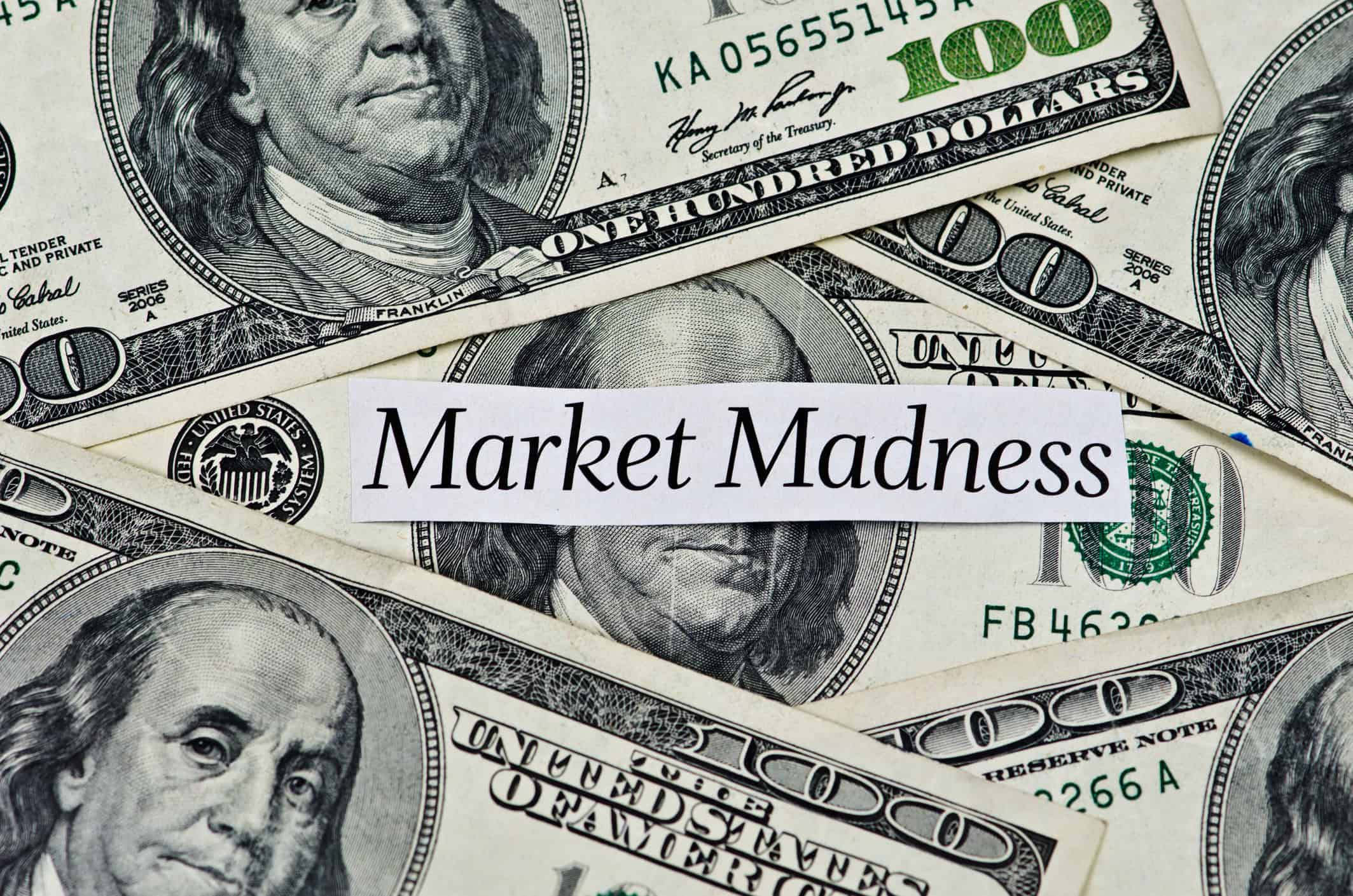
Top 10 Investment Themes for 2023
Top 10 Investment Themes for 2023
Before we delve into the Top 10 investment themes for 2023, let’s recap 2022. As you may recall, our overall macro theme for 2022 was “Still Growing but yet Slowing.” The theme proved to be relatively accurate, at least as it relates to the economy overall. (As of 12/14/22, the Federal Reserve’s median forecast for U.S. Real GDP growth in 2022 is 0.5%). But fell far short as it relates to capital markets growth as both equity and bond markets contracted in 2022.
Persistent high levels of inflation, rising interest rates, and the impending threat of a recession were among the primary culprits for the pullback. Consistent bouts of volatility marked the year. Consider that of the first 237 trading days of 2022, there were 102 up days and 135 down days as measured by the S&P 500 Index. With daily moves of 1.5% or more occurring on 76 of those days, that’s 32% of the time! As a result, many investors are happy to see 2022 conclude and hope that better days are ahead in 2023.
Better Days Ahead
Coincidentally, we see the theme for 2023 as “Better Days Ahead.” This theme does not imply that inflationary pressures will disappear overnight because they will not. It also does not mean that the Federal Reserve (Fed) will stop raising interest rates. The Fed will not (at least for the foreseeable future). And finally, it does not imply that the periods of short-term bouts of volatility are behind us. What it does suggest, however, is that the worst is now behind us for this rate hike cycle. We have reached both peak hawkishness on the part of the Fed and peak inflation. Better days may be ahead for certain areas of the stock and bond markets, although not necessarily the economy.
Below are our “Top 10 Investment Themes for 2023” for your review and consideration.
1. Investing for a Recessionary Environment
– The Federal Reserve stopped purchasing bonds, shrunk the size of its balance sheet, and raised the Federal Funds Target Rate by 4.25% in 2022 to help combat record-setting inflation. The economy has not yet felt the overall impact of these aggressive tightening measures. We believe that the impact will be significant and cause a further deterioration in earnings and economic growth during the 1st half of 2023. This will likely lead to a recessionary environment (which could be further exacerbated if the Fed remains too aggressive for too long), recognizing that an impact has already been felt within the housing market. Historically, stocks within sectors such as Health Care, Consumer Staples, Industrials, Utilities, and investment-grade fixed-income investments have fared relatively well during economic slowdowns leading up to and through recessionary periods.
2. Rates likely to Rise Slightly Higher, Remain Elevated, and then Fall
– The Federal Open Market Committee (FOMC) meets eight times each year, and they have four scheduled meetings during the 1st half of 2023; January 31 – February 1, March 21 – March 22, May 2 – May 3, and June 13 – June 14. We contend that the Fed may pause raising interest rates sometime by the end of the 1st half of 2023 and then keep them at elevated levels for some period.
To put this into context, following the most recent rate hike of 50 Bp in December 2022, if the Fed were to raise rates by 25 Bp following each of their first three meetings of 2023, the Fed Funds Target Rate would then be in their earlier suggested terminal range of 5.00% – 5.25%. When it does occur, the pause will allow the Fed to assess the overall economic impact of their monetary policy since the beginning of 2022. We believe that the damage may be significant enough to warrant the consideration of rate cuts by the end of 2023/beginning stages of 2024.
3. Recent Momentum in M&A Activity Continues
– As society slowly emerges from the COVID-19 Pandemic, healthcare is of paramount importance to individuals across the globe. Unfortunately, many rare and chronic diseases beyond the coronavirus do not have treatments or cures. Generally, innovative treatments come from smaller-cap biotech companies in areas such as immunology and oncology. Larger-cap pharmaceutical firms have historically looked to acquire these innovative healthcare solutions to help provide additional revenue potential.
During periods of market selloffs, similar to market conditions throughout 2022, M&A activity will typically increase as the target company being acquired trades at a discount, allowing the acquiring company to strike a deal at a lower cost. Additionally, because equities experienced a decade-long bull run before the start of 2022, the high market valuations of large-cap pharmaceuticals created over this time should allow for companies to more easily use their equity to purchase other companies via stock transactions, similar to the type of activity that occurred following the 1990-1991 recession. Overall M&A activity, which slowed down significantly during the Pandemic, has started to pick up pace in 2022.
According to White & Case, there were 481 deals targeting the U.S. healthcare sector during the 1st half of 2022, with an approximate value of $92.4 billion. Additionally, the second quarter of 2022 was one of the busiest three-month periods for acquisitions in recent years, according to a BioPharma Dive article published on October 3, 2022. We believe this type of M&A activity will continue in 2023. Also, on the M&A front, we would not be surprised to see a pick-up in M&A activity in 2023 associated with smaller-cap regional banks as well.
4. Moving Beyond ESG Debate to Sustainable Impact Investing Principles
– The acronym of ESG, which stands for an investment approach based on the Environment, Social, and Governance ratings of a given company, became a highly controversial term and political lightning rod in 2022. Much of the controversy centered on the Environment aspects. Certain parties were concerned over either too great of an emphasis placed on climate change by a given company or companies who engage in “greenwashing” without living up to their stated environmentally friendly practices. It is important to remember that Sustainable Impact Investing is about more than just the “E” by focusing not only on the “S” and the “G” but also on the investment merits of each respective company’s stock, and the trend toward sustainable investing has been growing.
According to the 2022 trends report from the Forum for Sustainable and Responsible Investment, sustainably invested assets under institutional and retail management totaled $8.4 trillion and represented just under 13% of all U.S. assets under management in 2022. Additionally, ESG incorporation reported by money managers totaled $5.6 trillion in 2022. However, most of these assets are associated with institutional investors. We believe that sustainable impact investing strategies will attract more and more attention from retail investors in 2023 and beyond as retail investors move beyond the ESG debate and incorporate whether companies treat their employees well, give back to their communities, and are also good stewards of the environment, into their investment process.
5. Low Supply and High Demand Propel Municipal Bonds Higher
– According to data from Bloomberg, 21% of outstanding tax-exempt debt will mature or be called by the end of 2024 and 31% by the end of 2026. That’s a lot of redeemed money that will be looking for new municipal bonds to invest in over the course of the next three years. There may not be enough new supply to meet all of that demand. Consider that in 2022, municipal bond issuance was down approximately 20% on a year-over-year basis, according to data from FactSet.
Given the prevalence of cash on the balance sheets of many municipalities following the COVID-19 Pandemic and the higher interest rate environment, it is reasonable to believe that the supply of new municipal debt will remain low, at least through the first two quarters of 2023. Low supply and continued demand for tax-free income, which could increase during a recession, particularly from high-net-worth investors, should propel the prices of municipal bonds higher in the New Year.
6. Positioning for Rebounds in both Equities and Bonds
– Investors in both bonds and equities suffered in 2022, albeit to different extents. As of December 16, 2022, stocks in the S&P 500 Index, widely considered a benchmark index for the U.S. stock market, have a year-to-date loss of 17.9% on a total return basis, while municipal bonds in the Bloomberg Municipal Bond index have declined by 7.81% thus far in 2022.
To put these pullbacks into a historical context, the S&P 500 Index experienced its worst half (with a loss of 19.9%) to start a year since 1970. Municipal bonds, widely regarded as a more conservative, income-oriented asset class, experienced their worst calendar quarter in 40 years, with a loss of 6.4% during the first quarter of 2022. Closed-end funds (CEFs) of municipal bonds suffered even more than the underlying municipal bonds, registering its worst calendar year of returns in the last 25 years. Both asset classes rebounded slightly by the end of 2022, and we would anticipate that rebound extending into 2023, notably in municipal CEFs, perhaps accelerating towards the second half of the year.
7. New American Economy Begins to Re-Emerge Later in 2023
– Coming out of the COVID-19 Pandemic, we contended that three (3) thematic areas would provide leadership to the new American economy that was likely to emerge. These three areas are Health Care, Technology, and E-Commerce. Two of these three areas declined significantly in 2022 as inflation proved not to be transitory, interest rates rose dramatically, and the economy slowed. These two areas are Technology, which generally falls under the Information Technology sector, and E-Commerce, which generally falls under the Consumer Discretionary sector. Health Care, on the other hand, held up relatively well. We contend that all three of these areas stand to benefit from the re-emergence of this new American economy later in 2023 as inflation continues to moderate and this rate hike cycle ends, with certain stocks in the Information Technology and Consumer Discretionary potentially benefiting the most, given the significant setback they experienced in 2022.
8. Harnessing the Potential of More Defensive, Dividend-paying Stocks
– According to the Hartford Funds, dividend income’s contribution to the total return of the S&P 500 Index averaged 41% from 1930–2020. During certain time periods, the contribution percentage was even greater. For example, the 1970s (a decade when total returns were low by historical standards). Dividends accounted for 73% of the total return of the S&P 500. Dividends can also be perceived as a vote of confidence from the management team and a sign of the balance sheet strength of the issuing company.
Those companies whose stocks have a history of maintaining or increasing their dividends, with reasonable valuations and relatively low levels of volatility, may be worthy of consideration as the economy slows further in 2023 and volatility continues to spike during the first half of the new year. The popular sports adage “Sometimes the best offense is a good defense” can often apply to investing as well and may be the case again in 2023 as it was in 2022.
9. A Growing Preference for Preferred Securities
– A security type that income-oriented investors historically have forgotten about is preferred securities. This dynamic is seemingly starting to prefer preferred securities. As a reminder, preferred securities represent corporation ownership and have bond and stock-like features. Often referred to as “preferred stocks,” preferreds usually pay a fixed income, have a par value, hold a credit rating, and trade on a major exchange. Perhaps most important to income-oriented investors, preferreds also have dividends paid out before dividends to common shareholders. They typically have a higher stated dividend payout than the corporation’s common shares – and even the company’s bonds in some cases. In some instances, preferred securities provide qualified tax treatment of their dividends, creating an additional benefit to income-seeking investors. Given the current valuations of many preferreds, their income potential, and relatively low levels of volatility, investment-grade preferred securities are worthy of consideration for taxable income-oriented potential in 2023.
10. Better Days Ahead Overall, but Some Bumpy Days are Anticipated
– As we stated at the beginning of this piece, better days may be ahead for investors in 2023 when compared to 2022, but that doesn’t mean that volatile days (or weeks) in the financial markets are behind us given the many uncertainties around central bank actions across the globe and the global economic impact of all these actions. While certain innovative companies within widely recognized sectors of growth potential may prosper during a stock market rebound, having some degree of downside protection and income potential within a portfolio strategy may provide for an optimal, longer-term solution.
Let Hennion and Walsh offer a second opinion
We’ve outlined the most essential changes, but the new law is extensive. Curious to learn more? Our unmatched client experience will give you peace of mind. Just as you may seek a second opinion about your health, we believe successful investors can gain value and peace of mind by getting a second opinion on their financial health. So, whether you’re worried about today’s uncertain economic environment or looking for increased peace of mind, we can help. Get a complimentary second opinion on all your retirement accounts not held at Hennion & Walsh today!
Hennion & Walsh Experience
We have advisors, planners, and portfolio managers that can collectively analyze your situation through the lens of their respective disciplines. Each member brings valuable insights to apply to your situation. Whether you are looking for income strategy guidance or growth strategy guidance, a second opinion of all your retirement accounts not currently held at Hennion & Walsh could be beneficial to your financial health.
Disclosures: Hennion & Walsh Asset Management currently has allocations within its managed money program, and Hennion & Walsh currently has allocations within certain SmartTrust® Unit Investment Trusts (UITs) consistent with several of the portfolio management ideas for consideration cited above.
Investing involves risk, including loss of principal. To determine if a Trust is an appropriate investment for you, carefully consider the Trust’s investment objectives, risk factors, charges, and expenses before investing. This and other information can be found in the Trust’s prospectus, which may be obtained by calling 1-888-505-2872 or visiting our website at www.smarttrustuit.com. Please read it carefully before investing. Past performance is not an indication of future results.




